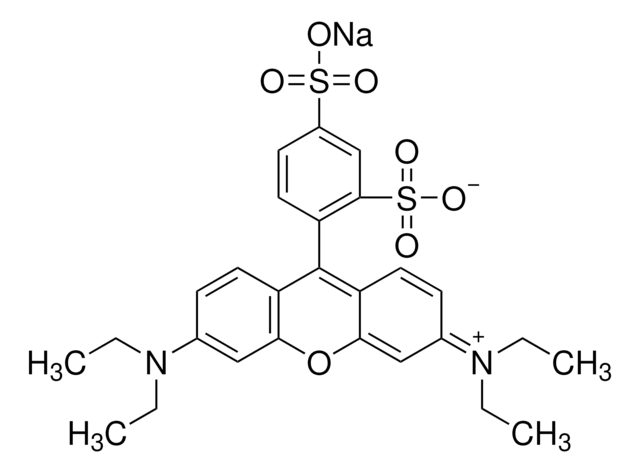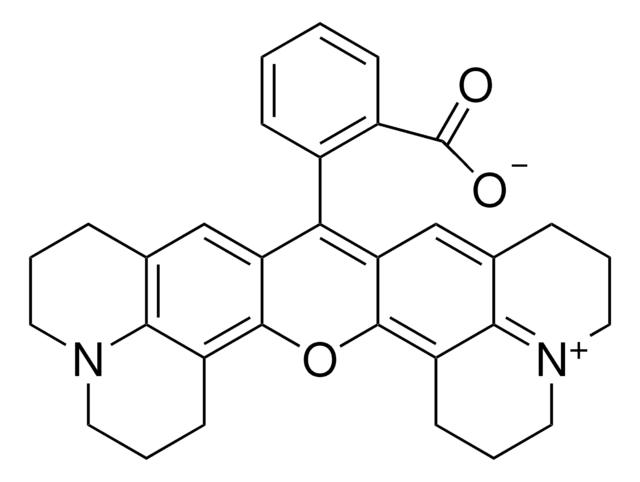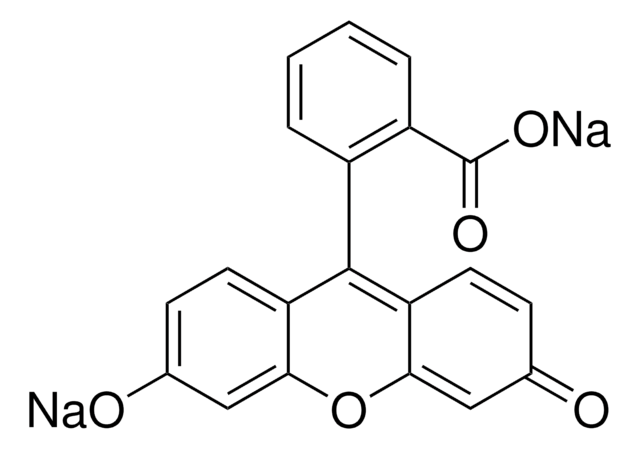S7635
Sulforhodamine 101
Dye content ~95 %, Powder
Synonyme(s) :
SR101; 2-(3-oxa-23-aza-9-azoniaheptacyclo[17.7.1.15,9.02,17.04,15.023,27.013,28]octacosa-1(27),2(17),4,9(28),13,15,18-heptaen-16-yl)-5-sulfobenzenesulfonate
About This Item
Produits recommandés
Nom du produit
Sulforhodamine 101, Dye content ~95 %
Forme
powder
Niveau de qualité
Composition
Dye content, ~95%
Technique(s)
microbe id | staining: suitable
Couleur
black
dark green to brown
Solubilité
methanol: 1 mg/mL
ε (coefficient d'extinction)
≥105000 at 573-579 nm in ethanol
Fluorescence
λex 586 nm; λem 605 nm in H2O
Application(s)
diagnostic assay manufacturing
hematology
histology
Température de stockage
room temp
Chaîne SMILES
OS(=O)(=O)c1ccc(C2=C3C=C4CCC[N+]5=C4C(CCC5)=C3Oc6c7CCCN8CCCc(cc26)c78)c(c1)S([O-])(=O)=O
InChI
1S/C31H30N2O7S2/c34-41(35,36)20-9-10-21(26(17-20)42(37,38)39)27-24-15-18-5-1-11-32-13-3-7-22(28(18)32)30(24)40-31-23-8-4-14-33-12-2-6-19(29(23)33)16-25(27)31/h9-10,15-17H,1-8,11-14H2,(H-,34,35,36,37,38,39)
Clé InChI
COIVODZMVVUETJ-UHFFFAOYSA-N
Vous recherchez des produits similaires ? Visite Guide de comparaison des produits
Description générale
Application
- to label astrocytes
- in quantitative polymerase chain reaction (PCR)
- to determine the degree of disintegration in tissue sample
Actions biochimiques/physiologiques
Code de la classe de stockage
11 - Combustible Solids
Classe de danger pour l'eau (WGK)
WGK 3
Point d'éclair (°F)
Not applicable
Point d'éclair (°C)
Not applicable
Équipement de protection individuelle
Eyeshields, Gloves, type N95 (US)
Faites votre choix parmi les versions les plus récentes :
Déjà en possession de ce produit ?
Retrouvez la documentation relative aux produits que vous avez récemment achetés dans la Bibliothèque de documents.
Notre équipe de scientifiques dispose d'une expérience dans tous les secteurs de la recherche, notamment en sciences de la vie, science des matériaux, synthèse chimique, chromatographie, analyse et dans de nombreux autres domaines..
Contacter notre Service technique




